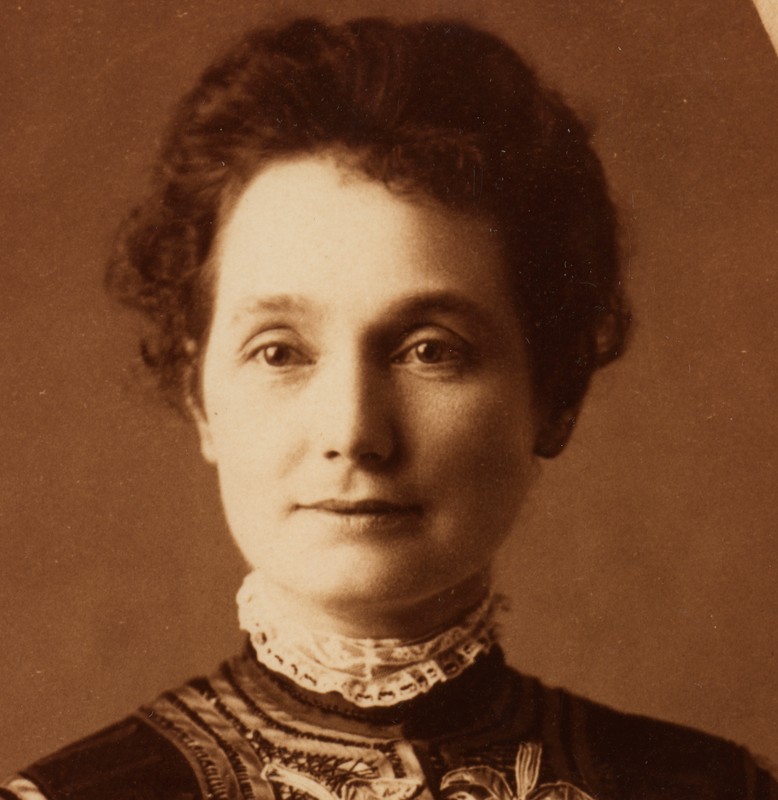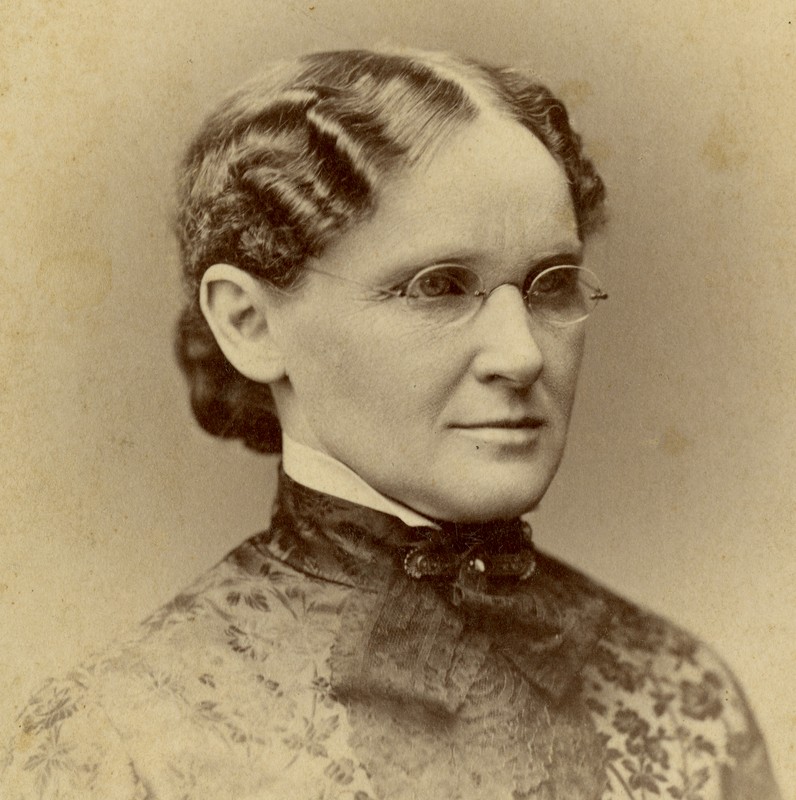Women of the Frank House/Grothan Sanitarium
Introduction
Text-to-speech Audio
Images
Georgiana Grothan

Phoebe Frank

Backstory and Context
Text-to-speech Audio
Phoebe McNair (Frank) was born in Groveland New York in 1832. While growing up she went to school at the Ontario Female Sanctuary, as well as the Geneseo Academy. She was married to George W. Frank in 1854. Her life within Kearney was very short, moving in 1889 around the age of 57. Neither Phoebe nor her husband George lived in Kearney for a very long time, approximately ten years. Unfortunately for the Frank family, Phoebe passed away in 1900 and George lost most of his money and assets with the depression of the 1900s.
Although George W. Frank was a well-known and respected man in Kearney for his many different contributions to the town, Phoebe Frank has very little written about her and her achievements throughout the community. One of the most well documented articles about Phoebe Frank is her obituary, written shortly after her death on February 4, 1900. With common knowledge of what is known for women of the time, one can assume that she was very active within the household itself when it came to the events that her husband was hosting. Phoebe Frank would have been the head of the household, overseeing the domestic servants that they employed for them within the home. Along with this, it is well-known that men of the time were looking to move their businesses westward for more opportunities. While the men were in the process of moving their businesses, the women who supported their husband’s business practice would move with them into their new locations. Not only can one assume this due to knowledge of the time period, but there is also evidence that Phoebe McNair had land in her name along side her husbands name, proving that she was happily involved in George Frank’s business propositions.
With the information about the Frank family, one can see certain things about their lifestyles within the town. One such thing that stands out was the master bedroom being located on the first floor of their mansion in Kearney. This was something relatively unusual for the first floors of homes were often meant for guests and special events, leaving the personal life of the homeowners out of the picture. However, both Phoebe and George were not young individuals, leading to them having health issues that limited their mobility around their home. This shows that Phoebe was more progressive in her mindset, focusing more on her own health rather than the views of her and her husband’s peers.
Following the death of Phoebe Frank and having George W. Frank move out of their mansion came the Grothans, a husband and wife doctor combo within Kearney who purchased the Frank mansion and turned it into a sanitarium. Dr. Georgiana Grothan was born in Saybrook, Illinois in 1867. While growing up she attended the Women’s Medical College of Chicago in 1893 where she graduated with honors. While attending college, Dr. Grothan decided to specialize in the field of diseases for both women and children. Georgiana Grothan published many different articles throughout her time, some of which were can be seen as controversial in more modern times but a step in the future for the time period in which they were written, where as other articles were much more modest and revolved around her findings with certain diseases of the time period. These articles included topics such as pneumonia and her findings, as well as the possibility of using chloroform on women during childbirth in order to ease the pain. Although Dr. Georgian Grothan was well respected within this period, she suffered the same unfortunate lack of documentation. An individual can, however, still find many of her articles that were written as well as a few other articles about her that have been documented. Unfortunately, many of the newspaper articles of the time focus on her husband, very few of which mention Georgiana herself. Georgiana moved out of the Frank House after selling it to the state of Nebraska in 1907. She then proceeded to move back to Chicago, where she passed away on November 12th of 1926.
Sources
G.W. Frank Museum of History and Culture Archives
Frank Family Archives
Grothan Sanitarium Archives
Interview with curator April White
Lund, Virginia Llego. George Washington Frank's Stone House On the Nebraska Prairie. Victoria, B.C.. Trafford Publishing, 2016.
G.W. Frank Museum of History and Culture Archives
G.W. Frank Museum of History and Culture Archives
